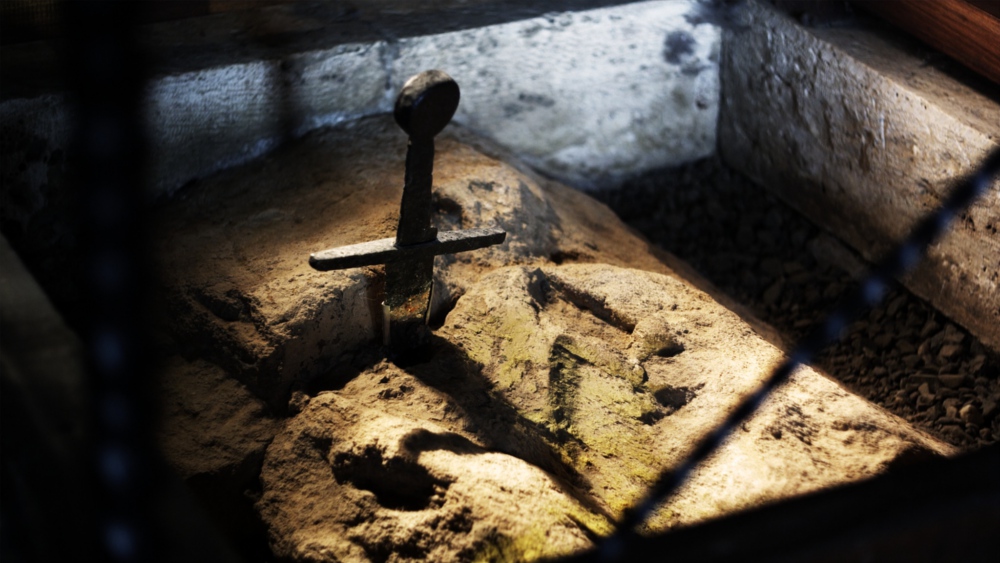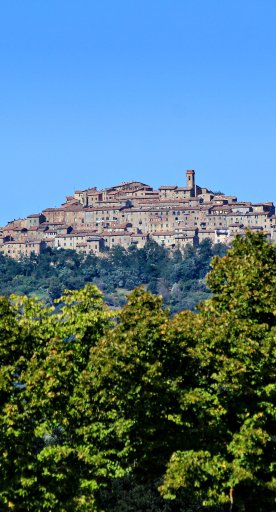
The Hermitage of Montesiepi
A mystical place within walking distance of the Abbey of San Galgano
Not far from the famous San Galgano Abbey, nestled in the Chiusdino countryside, stands the Hermitage of Montesiepi, likewise dedicated to the Saint. This fascinating religious building holds one of the most captivating symbols of the Tuscan Middle Ages: the sword in the stone, linked to the extraordinary story of Saint Galgano.
The hermitage was built soon after the Saint’s death in 1181, likely commissioned by the Bishop of Volterra. The circular architecture of the chapel, with alternating bands of stone and brick, creates a striking two-tone effect.
Inside the hermitage is the iconic sword of Saint Galgano, embedded in the rock. The sword emerges from the floor of the church at the apex of the hill. It was originally set in an altar that occupied the center of the room, subsequently demolished in the 17ᵗʰ century and replaced in recent years with the present one.
Shortly after its completion in the early decades of the 13ᵗʰ century, the chapel was given an entrance pronaos, featuring a portal with a two-tone arch that echoed the decorative theme of the circular church.

During the 14ᵗʰ century, the Hermitage was enlarged with a new rectangular chapel, embellished with frescoes by famous Sienese painter Ambrogio Lorenzetti, who created the cycle of frescoes dedicated to Allegory of Good and Bad Government for Siena’s Palazzo Pubblico. Prominent among the scenes depicted inside the Hermitage of Montesiepi is an extraordinary Madonna in Majesty, where one can see Eve with a goatskin on her shoulders (a symbol of lust), holding a fig tree (a symbol of sin) in one hand and showing a scroll explaining the moral of the scene with the other. Thanks to recent restorations, it has emerged that the original version of the work was slightly different. The Madonna held a scepter in her left hand and, instead of her child, on the right she carried an orb, a symbol of power generally referred to men. This choice was later modified by Sienese painter Niccolò di Segna to conform to traditional figurative patterns.
Around the mid-16ᵗʰ century, the structure underwent certain transformations. Namely, the church’s lead roof, which had been sold, was replaced by the present brick drum topped by a roof lantern. The buildings attached to the chapel were developed by incorporating and expanding the structures of the primitive monastic settlement. Further defined in the 18ᵗʰ century, they gave the structure its present appearance.








